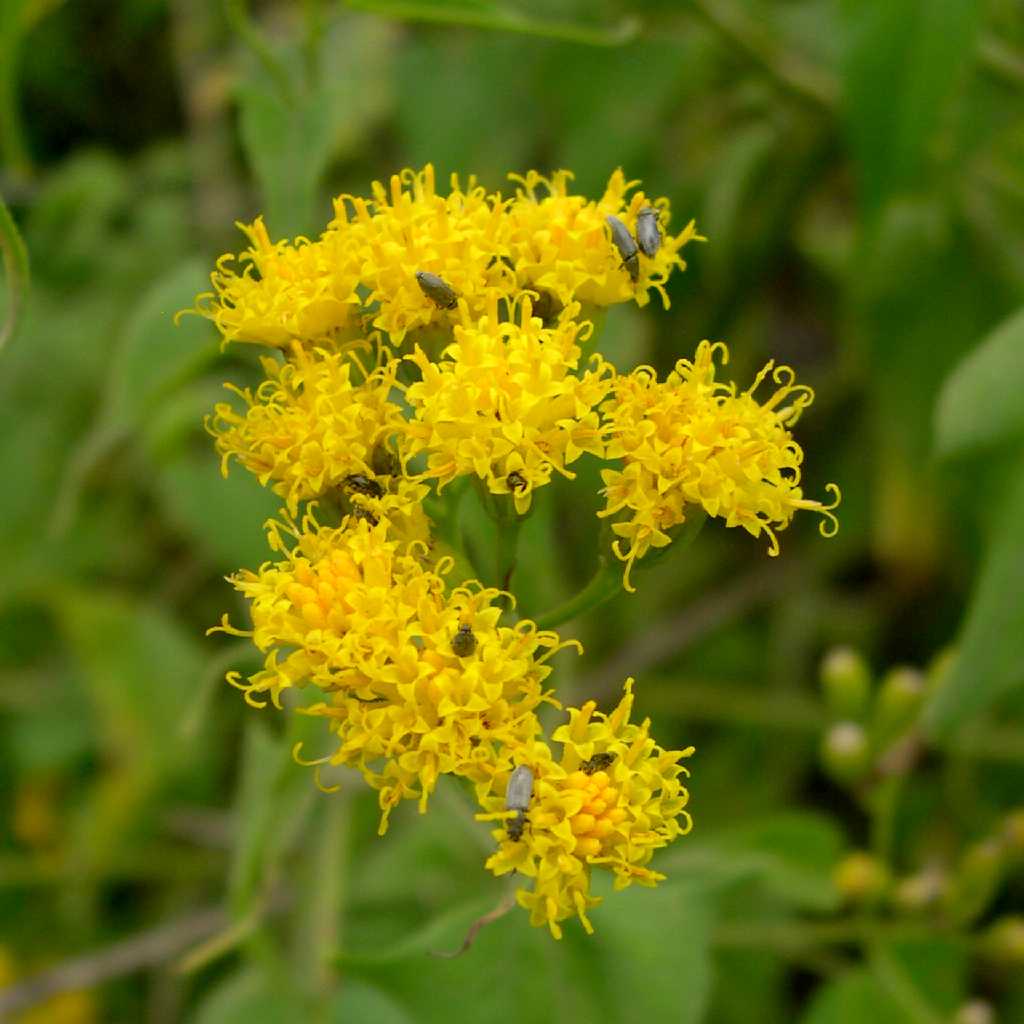Pericome
|
Family: Asteraceae |
Perennials or subshrubs, (20-)50-150+ cm. Stems multiple, spreading, branched. Leaves mostly cauline; mostly opposite, distal sometimes alternate; petiolate; blades (3-nerved) usually deltate-hastate basally, sometimes subhastate, ovate, or cordate, margins entire, cleft, toothed, or 3-5-lobed (apices long-attenuate, caudate), faces sparsely to densely puberulent, usually copiously gland-dotted (distal leaves rarely tomentulose). Heads discoid, in corymbiform or compound-corymbiform arrays. Involucres turbinate-campanulate, 4-10 mm diam. Phyllaries 16-24 in 1 series (connate 1/2+ their lengths, linear, subequal). Receptacles convex, pitted, epaleate. Disc florets 30-70, bisexual, fertile; corollas yellow (glabrate or densely gland-dotted), tubes mostly shorter than abruptly dilated, cylindric throats, lobes 4, triangular. Cypselae (black with pale margins) flattened, oblong-oblanceolate to narrowly linear-oblanceolate (margins calloused or thin, densely ciliate); pappi 0 or, persistent or falling, vestigial, or of 8-12 distinct or partially connate, fimbriate to laciniate scales (sometimes 1-4 scales aristate) plus 1-2(-6) ciliolate bristles. x = 18. The close relationship of Pericome to Perityle is apparent in the similarity of general vegetative and floral morphology, particularly in the similarities of cypselae and pappus structure. The shrubby habit and capitulescence of densely aggregated heads with united involucral bracts of Pericome distinguish it from Perityle. Pericome is widespread in Upper Sonoran and Montane zones of the southwestern United States.
|

